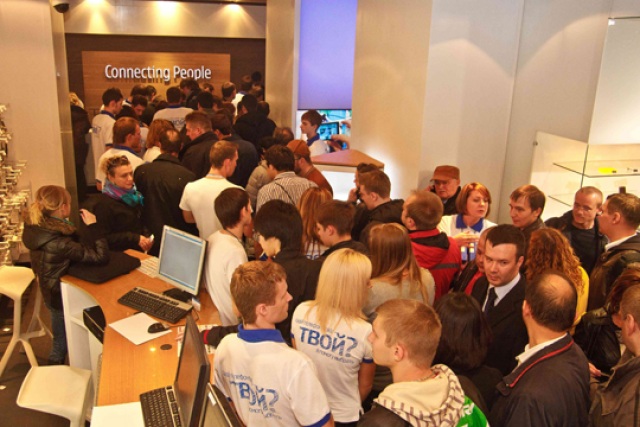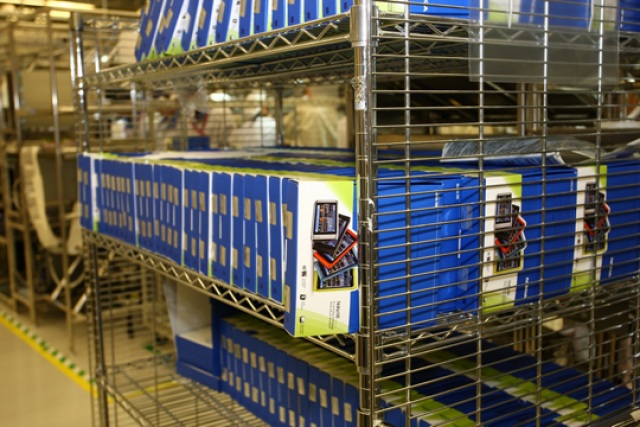What has surprised me is that the long period between the announcement and release of the Nokia N8 is not months and months longer than previous flagship devices (specifically the “revolutionary” N95 and N97). In fact with just 156 days between announcement and shipping, the N8 has reached the streets faster than the N95’s 194 days and the almost similar N97’s 189 days.
What this tells me is that Nokia might have a rough guide to developing a smartphone that’s perceived as a flagship phone. When it reaches a certain point and needs to be put into the field to test and be sold to the networks, that’s a good time to announce it – rather than have a network employee leak the details accidentally or otherwise.
It’s also worth stressing that every company does have their own way of doing things, and this will have an impact on timing. Nokia is a global company, and certainly for the N8 they wanted every territory to get the phone at the same time. Coordinating a global release takes a little bit longer than sorting out a few stores or a network exclusive package in a single territory, especially if you are working closely with the networks. Both are releases, but they are vastly different in terms of logistics. Similarly, communicating with an operator about a few handsets is very different to doing the same thing for a whole portfolio of devices.
These options tend to follow previous company decisions, so Nokia will tend to go longer to make sure they have a wider release, and because a lot of sales are through networks, there needs to be time built into the plans for those decisions to be made by external companies.
In the case of devices that don’t gather as much attention, or are aimed at different market segments, the time between public announcement and availability can be shorter. The Nokia 5800 had a much shorter “waiting” time of just 56 days, so that means that the main word in “rough guide” is “rough”. Incidentally the 56 days 5800 roll out was limited to a few markets, the global roll out came about a month or so later.
So is there a hard and fast rule to when to announce and when to release? Err, no. As with most things in life, it all depends on the circumstances at that moment in time, and no matter what you do people will want it to happen faster.

It’s an interesting trade off between wanting time to build up a marketing head of steam and not having the unit hanging in limbo. Yes, there are benefits to having availability as soon after a launch as possible, witness the same day effort placed on the Google Nexus 1 (or a short period afterwards - it was just eight days for the Blackberry Torch to reach AT&T, while the Nokia E71 was available a fortnight after its unveiling). However it’s not as popular as you would expect. In most cases the majority of phones are bought by people with absolutely no awareness of when the device launched.
It’s also far easier to get a point release out to market than an all new handset with an updated operating system or major changes. Nokia's big hitting phones in the N95, N97 and N8 have all been the first of breed and required far more testing than, say, the many Nokia 5230 variants, which could rely in part on the knowledge gained from earlier devices.
Even the mighty Apple has tried it both ways, with the iPhone 4 needing just 16 days to reach the stores compared to the original iPhone handset’s 169 day delay (and note that this was only in select markets). You could argue that the initial phone had such a long delay because it was the launch of a new platform, Apple didn’t want it to leak, or they just had a really good time they could announce it. All arguments that are equally valid for the Nokia N8… or the Samsung Galaxy S (which took 99 days to reach O2 in the UK after numerous delays and push backs on the launch date). There’s also the danger, if a device is rushed to market, that problems can be found - such as a ropey firmware or antenna problems – and then it’s a lot harder to cure when the handsets are in the public hands.

You can pretty much prove anything with statistics, so it’s tough to draw conclusions that can apply in the future. For example, you can look back and conclude that the N8 is one of Nokia’s quickest ‘flagships’ to get to market. However, ultimately, I would argue that there’s a lot of noise in the numbers, with many factors that simply can’t be traced.
And most of the noise comes from the very few people online who are focused on getting the newest device in their hands as soon as possible. There's a much larger world out there, the sort of world where hundreds of thousands of devices are sold every single day. Do you think all those people are marking off the days till the new super-device is here? And what about the people walking into the store on the second day. Or the third? The vast majority of people buy a device by walking into a store, finding one they like, and handing over some cash and a signature. It doesn't matter to them if a phone they don't know about is delayed by a few weeks.
In short, I see no direct relationship between manufacturer and the time you have to wait to get the latest shiny toy in your hand. For people to say the N8 delay is typical Nokia is nothing more than a discredited rule of thumb – exactly like the image of “just one more thing” putting the newest handset into an Apple store the second the keynote finishes.
Actually there is a rule that should be used, and in many (but not all) cases it does apply. It goes something like this:
When it’s ready, it’ll be there waiting for you. And not before.
-- Ewan Spence, Oct 2010.
And now, all those numbers, dates and days in full.
| Phone | Announced | First retail availability | Delay |
| Nokia N95 | Sept 26 2006 | Mar 8 2007 | 194 days |
| Apple iPhone | Jan 9 2007 | June 29 2007 | 169 days |
| Apple iPhone 3G | Jun 9 2008 | July 11 2008 | 31 days |
| Nokia E71 | Jun 16 2008 | July 7 2008 | 19 days |
| Nokia 5800 | Oct 2 2008 | Nov 27 2008 | 56 days |
| Nokia N97 | Dec 2 2008 | Jun 9 2009 | 189 days |
| Samsung Galaxy (i7500) | Apr 27 2009 | Aug 4 2009 | 99 days |
| Google Nexus 1 | Jan 5 2010 | Jan 5 2010 | Same day availability |
| Blackberry Torch | Aug 3 2010 | Aug 12 2010 | 8 days |
| Nokia N8 | 27 April 2010 | Sept 30 2010 | 156 days |
| Apple iPhone 4 | 7 June 2010 | 24 June 2010 | 16 days |
